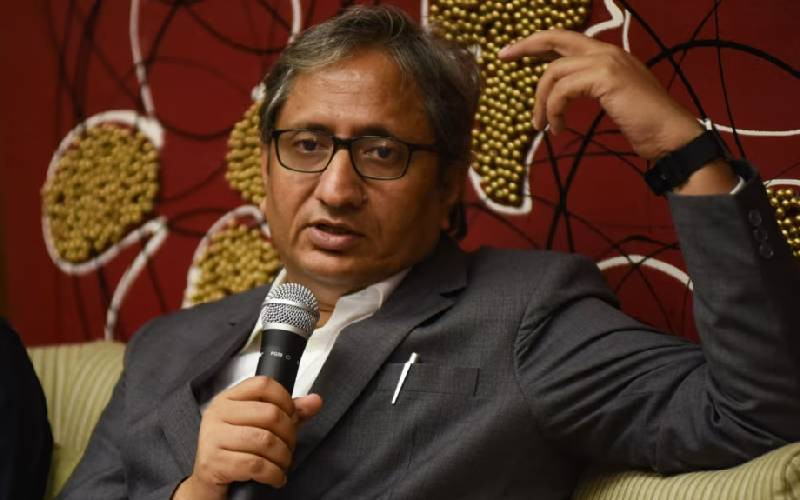By AMSTRONG RONO
The media has come to play an increasingly important role in public campaigns due to its wide reach and ability to influence behaviour. It has contributed to positive development like in the fight against HIV/Aids, gender bias, poverty and racism.
And now there is an urgent need to use the full power of the same media to educate and enable Kenyan youth to shun substance abuse and illicit drugs. This includes preventing drug abuse, encouraging current users to quit and exposing illegal trade in drugs.
There is significant evidence that carefully planned mass media campaigns can reduce substance abuse by countering false perceptions that drug use is normative and influencing personal beliefs that motivate drug use.
Deep impact
Media messages have a deep impact on the society and are instrumental in creating popular accepted norms. The media ensures quick and easy flow of information and education.
Currently, some ideals created by sections of the media might not necessarily be appropriate. Some play music and videos that give out the message that alcohol, drugs and sex are ‘cool’ and the in thing. The glorification of violence, drug abuse and other unhealthy habits has a role in the outburst of unfortunate incidents where teens and children have lately become extremely violent and out of control.
According to some studies, media containing scenes or conversations about alcohol, drugs and tobacco can affect their use especially among children and teens.
Media houses should try to reduce or eliminate the appearance of these substances. We should encourage musicians, actors, writers and producers to portray substance abuse in a realistic and not a glamorous way.
Media involvement should include features, news stories and sporadic mass media education and prevention campaign.
These campaigns will broaden community knowledge on drug abuse, influence people’s attitude towards addicts, and change behaviours that contribute to, or precipitate substance abuse.
True, for all their power to inform and persuade, the media alone are unlikely to bring about large, sustained changes in substance abuse. The anti-drug campaign will be truly successful only if media efforts are coordinated with initiatives that reinforce one another in homes, schools and communities.
The media messages and channels need to be tailored for specific ethnic, regional, cultural, gender and age differences among the members of the target audience.
Existing motives
Mass media should communicate incentives or beliefs for adapting the desired behaviour that build on the existing motives, needs and values of the target group.
Stay informed. Subscribe to our newsletter
Young people should be taught facts about long-term effects of substance use, especially when there is misinformation about the addictive potential and long-term effects of a particular drug.
When communicating messages to teens, using peer models as campaign spokespersons is ideal to using adult.
However, the use of celebrities should be approached with caution. If used, they should be people whose public image fits the underlying campaign strategy.
Messages directed at teens should capitalise on important themes in the development of teen identity, including freedom, autonomy and peer group acceptance.
There is need for partnerships and collaborations between the media, the relevant drug prevention authorities and law enforcement agencies in educating communities about the dangers of drugs and exposing illicit drugs trade.
Training journalists and media representatives on drug abuse and the core concepts of primary prevention of drug use is paramount. Journalists are vital in disseminating accurate information.
Improving news content quality regarding drug issues is necessary to reflect social and economic development. After all, the media are a frontline stakeholder in the fight against drug abuse.
The writer is a specialist in rehabilitation of drug addicts.
 The Standard Group Plc is a
multi-media organization with investments in media platforms spanning newspaper
print operations, television, radio broadcasting, digital and online services. The
Standard Group is recognized as a leading multi-media house in Kenya with a key
influence in matters of national and international interest.
The Standard Group Plc is a
multi-media organization with investments in media platforms spanning newspaper
print operations, television, radio broadcasting, digital and online services. The
Standard Group is recognized as a leading multi-media house in Kenya with a key
influence in matters of national and international interest.
 The Standard Group Plc is a
multi-media organization with investments in media platforms spanning newspaper
print operations, television, radio broadcasting, digital and online services. The
Standard Group is recognized as a leading multi-media house in Kenya with a key
influence in matters of national and international interest.
The Standard Group Plc is a
multi-media organization with investments in media platforms spanning newspaper
print operations, television, radio broadcasting, digital and online services. The
Standard Group is recognized as a leading multi-media house in Kenya with a key
influence in matters of national and international interest.








